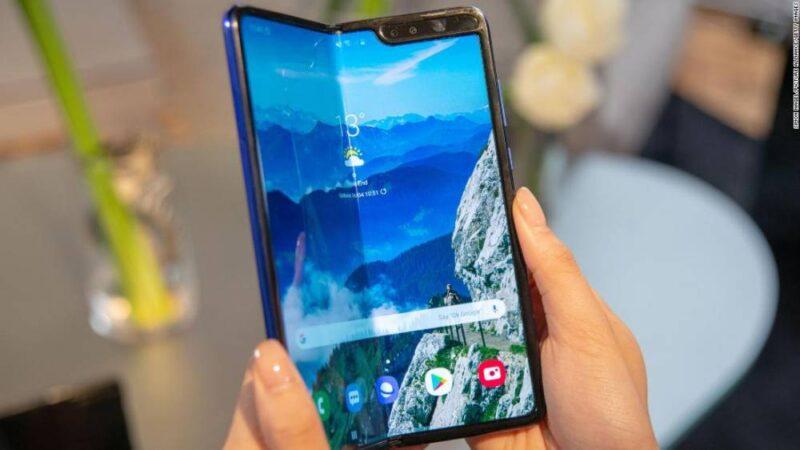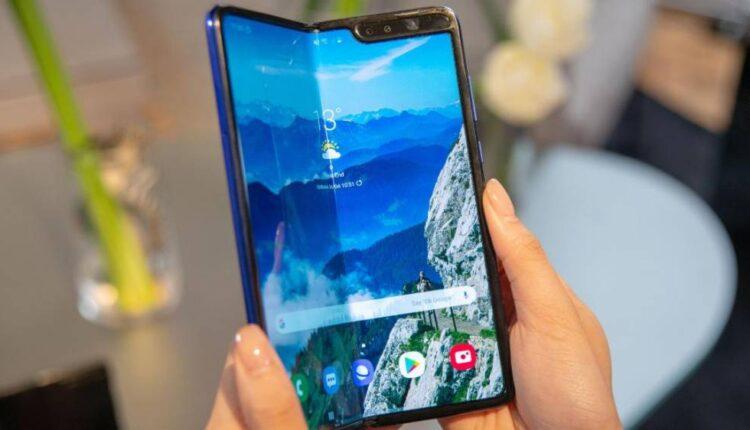San Francisco (CNN Business)Smartphone makers need something to shake up the market, and many believe the foldable phone could be the next big thing.
Incremental changes have failed to generate the anticipation and excitement smartphone releases did in the past, which has led to stalled sales from companies like Apple and Samsung as people hold onto their phones longer.So now some tech manufacturers are creating luxury foldable smartphones, more advanced than their ancestor the flip phone, that can unfold into tablets.
But taking a folding screen from concept to a working device has proven to be a monumental engineering challenge.Samsung famously had a high-profile flub with its nearly $2,000 Galaxy Fold. Several reporters given early access to the device discovered defective hinges and that their screens broke after removing the Fold’s protective film. Samsung responded by delaying the April launch of the device, and has yet to announce a new ship date.Read MoreHuawei, which had plans for a $2,600 foldable smartphone, announced earlier this month that it was delaying the launch. It now plans to release the Mate X in September. Meanwhile, Apple (AAPL) has filed numerous patents for a foldable device but has yet to announce plans for a device.Ben Bajarin, an analyst at Creative Strategies, said foldable screens create “a very challenging set of material science issues.”These include making organic light-emitting diodes (OLED) in a way that allows the pixels to bend without degrading and creating a hinge that won’t cause the screen to pop off. There’s also the challenge of what to do with the battery and whether it should bend with the screen.The biggest challenge, though, is the screen itself.

A production model of the Samsung Galaxy Fold Tablet smartphone can be seen at a presentation.Samsung (SSNLF) and Huawei both use a protective screen made of plastic polymers. Plastic polymers are flexible enough to bend but they aren’t as durable as glass and can be easily scratched. Plastics can also blister and, because they can be deformed without breaking, they can crease, according to William LaCourse, a professor of glass science at Alfred University.Plastic polymers may make a folding device possible sooner, but the long term solution is glass, which is more durable. Glass can only be permanently deformed at a temperature greater than 1100 degrees Fahrenheit. “The combination of ultra-thin glass, less than the thickness of human hair, and very high strength allows glass to be bent, twisted, etc. without fracture,” LaCourse told CNN Business. “It will not fold flat like a dollar bill, but you could fold it around a metal rod and you could do it over and over and it will still go back to flat [without] creases.”Smartphone screens are commonly made of glass, which is very strong and flexible. The problem is it isn’t yet at a point where it can be folded, according to LaCourse.He predicts that a device with a folding glass screen could be available in the next year or two based on advances he’s seeing in glassmaking.The ideal foldable screen needs to be thick enough to be ultra-strong but thin enough to be flexible and fold repeatedly without a lot of force.”The thicker the glass the greater the force on the bent region, and of course the greater the force you must apply to bend it,” LaCourse said.Corning, one of the world’s biggest glassmakers, created and produces Gorilla Glass, which is used by several smartphone makers, including Apple. (In 2017, Apple invested $200 million to support innovation in Corning’s glass production methods.) A spokesperson for Corning confirmed that it’s working to create an ultra-thin, durable glass that can be used as part of a bending device display. The company said it has already had success in testing a range of thicknesses.”This developmental glass can bend over hundreds of thousands of times without damage while maintaining its flatness, compared to alternative materials, which can begin to deform significantly at around 100,000 bends,” a Corning spokesperson told CNN Business. “In addition, Corning’s developmental glass can enable a static bend for extended time periods, while alternative materials are prone to creasing after extended periods of time.”Corning is responsible for several innovations including ultra-high strength thick glass, ultra-thin glass and glass that is flexible enough to be sold in rolls like saran wrap, according to LaCourse. For example, Gorilla Glass may be thin, but it can be stronger than steel. “The technology is being pushed to new levels … but there are still limits,” LaCourse said. He noted glass is a brittle solid, which means tiny flaws like scratches in the surface can multiply under stress. The thicker the glass, the more stress that’s caused when it’s bent or folded, so the more flaws it’s likely to have. Thinner glass, which is used in smartphone screens, is easier to bend, which means less stress and fewer flaws.But even ultra-thin glass can’t fold as flat as a dollar bill, according to LaCourse. It still has an advantage over plastic. If it’s placed around something like a metal rod that can act as a central axis, thin glass can be folded over and over and it will still go back to being flat without creasing.
LaCourse said even Gorilla Glass has limitations, as it can have tiny cracks in its surface. However, it’s still ideal for screens because the glass is squeezed together so tightly that the cracks get pushed together and become extremely difficult to open.The first generation of folding smartphones may be coming, but perfection remains far off.
Source: edition.cnn.com

